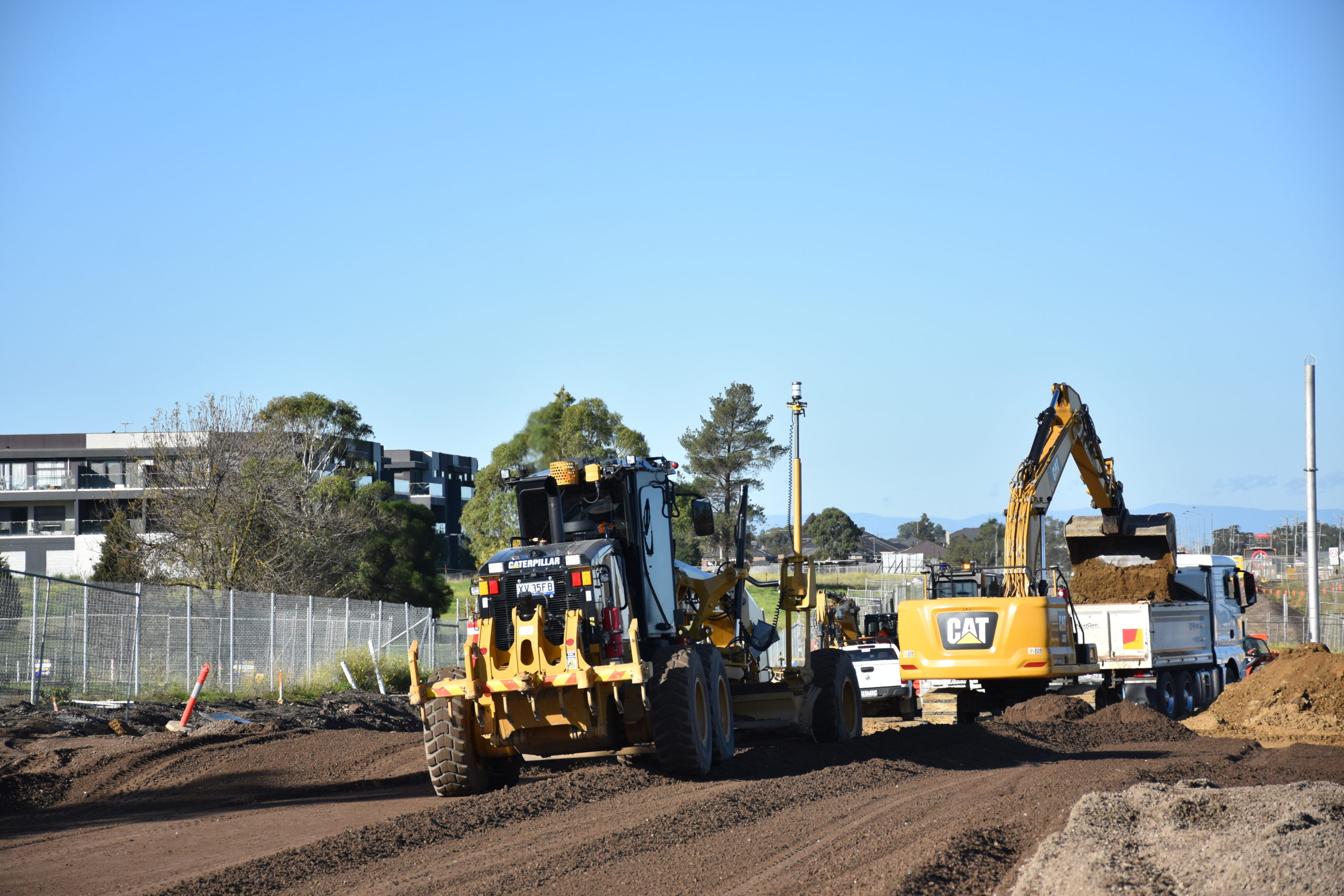
Did you know that each year, 90 billion tonnes of primary materials are extracted and used globally, with only nine percent recycled (United Nations Environment Programme, 2019)[1]? Continuing on this trajectory is unsustainable, leaving a significant impact on our environment.
However, companies like VEC Civil Engineering are doing their part to change this by prioritising the use of recycled materials within construction projects. By shifting to this ‘circular economy’ model (where resources are reclaimed and recycled in an endless loop), companies like VEC are helping the construction industry move away from today’s wasteful linear economy.
To discuss this further, we recently sat down with VEC’s Robert Wierzbicki, who works as a Senior Project Manager of Infrastructure Projects.
VEC’s and their ‘Zero Harm’ Sustainability Policy
“VEC started nearly thirty years ago as a small business in Tasmania,” says Wierzbicki.
“Now employing more than 100 people, we have both national and international reach, and are super proud of our history in innovation. In 2014 the company became a wholly owned subsidiary of Downer Group, which means we have the backing of an ASX top 100 company to help open the door of opportunity and expand our working relations within the industry.
“As a Downer business, we share the same set of Zero Harm Sustainability and Environmental Principles, with one of them being to ‘reduce, reuse and recycle to minimise waste’. Steadfast in our commitment to reduce the footprint in our work, we aim to reduce the generation of waste materials and divert material from landfill.”
“Wherever possible, we aim to use recycled materials, with a particular focus on the reuse of materials that can be extracted from the site. This includes the repurposing of excavated rock for beaching, recycled asphalt profiling as a base for footpaths, manufactured earthwork materials, as well as using crushed concrete in Cement Treated Crushed Rock (CTCR),” says Wierzbicki.
CTCR is a registered mixture of crushed rock, cement and water produced at a controlled mixing plant to close tolerances of grading, moisture content and binder content[2].
O’Herns Road – VEC’s First Victorian Project Using Recycled Materials
VEC and Repurpose It recently collaborated on a project for O’Herns Road.
“We were able to divert a large volume of material from landfill by sending it to Repurpose It for beneficial reuse,” says Wierzbicki.
“This means that while the material wasn’t suitable for our project because it didn’t meet the requirements for road construction, it was suitable for reuse on other projects.
“On the O’Herns Road project we were also able to use recycled products from Repurpose It, such as fill material, top soil, aggregates, CTCR, rock, type A capping and type B manufactured clay.”
“This was the first time that we used recycled materials in a Victorian-based project. It was fantastic to have the opportunity to use these materials and bring our sustainability goals to life, which is now incorporated into our project Key Performance Areas. Internally, there’s an incentive to use recycled material but there’s also a drive in the industry for that type of behaviour.”
Tackling the Great Debate on Recycled versus Virgin Materials
There is a current perception that virgin materials are better than recycled, despite being comparable in price, but Wierzbicki believes that comes down to a lack of education.
“People don’t know a great deal about recycled materials, however, we’re starting to see those barriers breaking down as the industry becomes more accepting of the idea,” said Wierzbicki.
“By getting more literature out there to industry professionals, updating specifications to support recycled content, and embedding targets within contracts, we’ll be able to create a greater emphasis for contactors to think outside the box and incorporate recycled materials within projects.”
“From our perspective, recycled materials are on par with, if not better than, virgin materials which are often lacking in supply and may contain potential contamination issues.”
“Recycled manufactured materials are crafted with control and specifications in mind, with greater testing and scrutiny of its quality in play, making them more consistent than virgin materials. For example, Recycled Asphalt Pavements often have better performance qualities.
“In terms of access and availability, we can always rely on Repurpose It to supply their recycled materials on time, as opposed to waiting for excavation sites to open up and have the virgin materials ready when we need them,” explains Wierzbicki.
The Sustainable Future of the Construction Industry
Looking to the future, Wierzbicki is confident the construction industry is making meaningful steps to become more sustainable.
“In the industry, and internally, there’s a greater emphasis towards reducing the carbon footprint of construction works,” says Wierzbicki.
“This includes designing more lean projects, reducing total materials quantities and developing new technologies for the reuse of materials found on site, such as repurposing existing pavements. In collaboration with companies like Repurpose It, we hope to see the construction industry being more green, sustainable and committed to creating a circular economy.”
You can learn more about VEC and its projects here.
[1] CSIRO, Circular Economy and Waste Management
https://www.csiro.au/en/research/environmental-impacts/sustainability/circular-economy
[2] Vic Roads, Registration of Crushed Rock Mixes https://www.vicroads.vic.gov.au/-/media/files/technical-documents-new/codes-of-practice-rc500/code-of-practice-rc-50002–registration-of-crushed-rock-mix-designs-july-2017.ashx